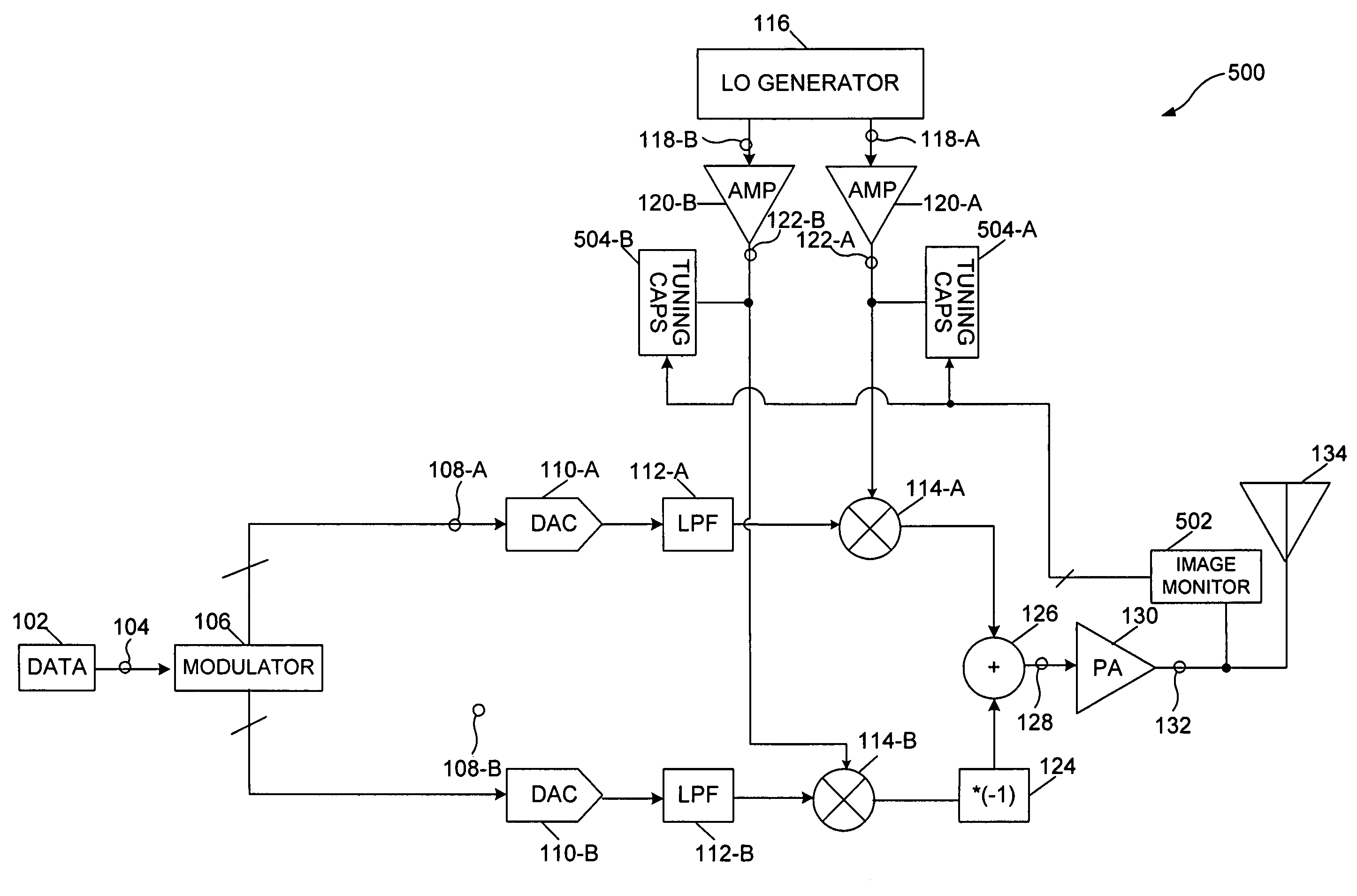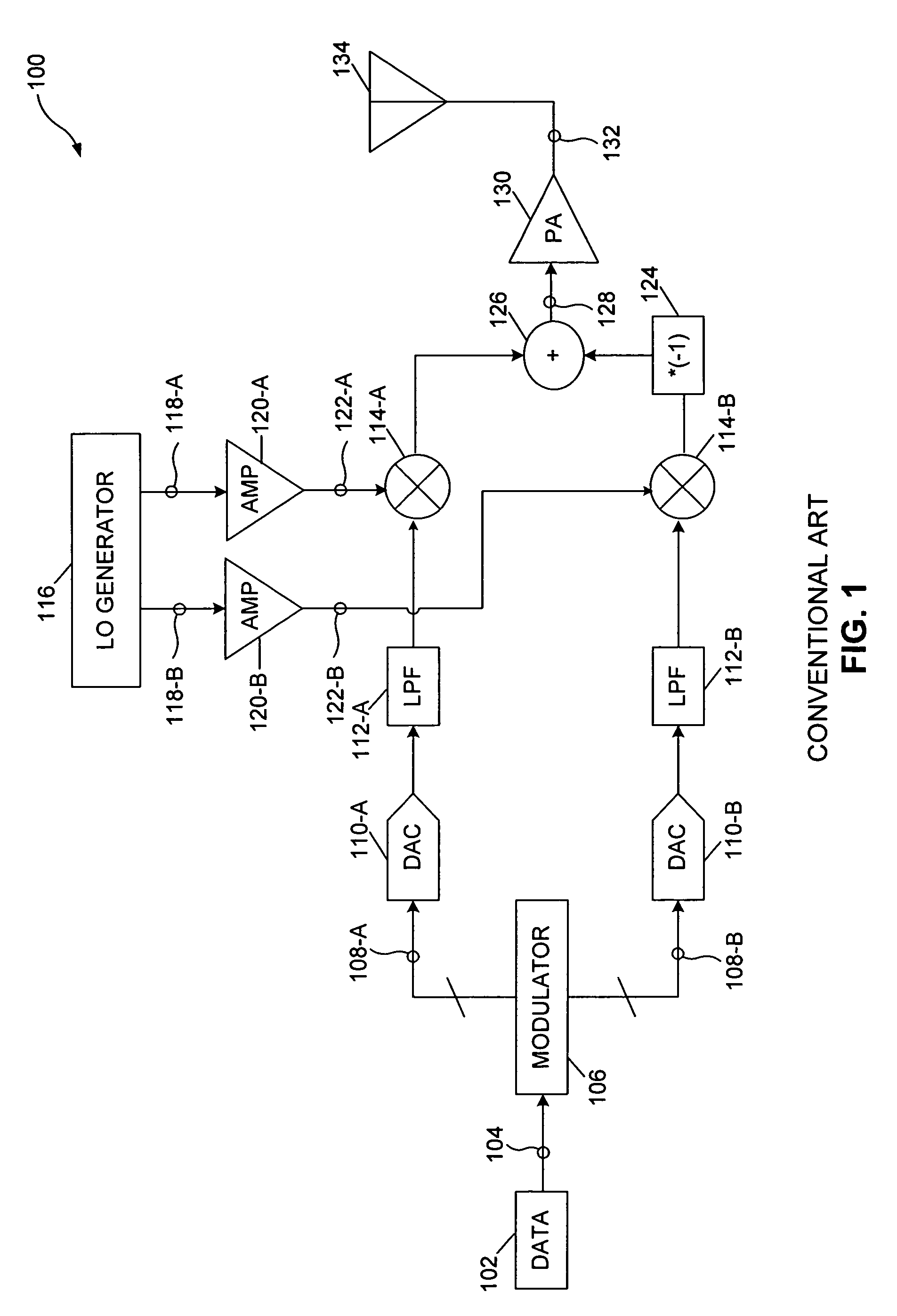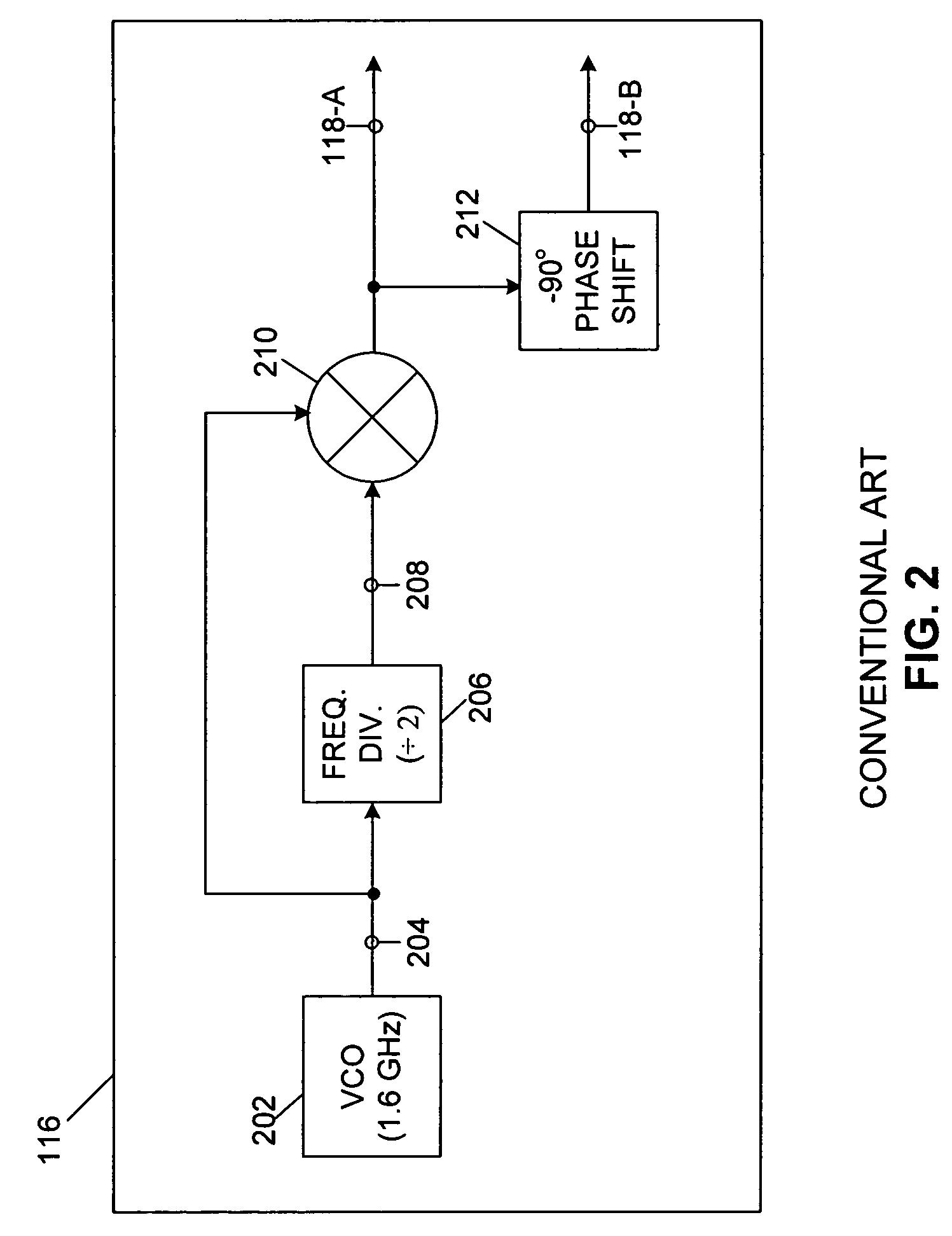Independent LO IQ tuning for improved image rejection
a local oscillator signal and independent tuning technology, applied in the field of image rejection, can solve the problems of significant propagation delay and settle time delay, current techniques, and quadrature-phase local oscillator signals that do not provide independent tuning of the phases of in-phase and quadrature-phase local oscillator signals
- Summary
- Abstract
- Description
- Claims
- Application Information
AI Technical Summary
Benefits of technology
Problems solved by technology
Method used
Image
Examples
Embodiment Construction
[0026]FIG. 1 illustrates a conventional wireless transmitter 100. The conventional wireless transmitter 100 includes an information source 102. The information source 102 generates a data signal 104. The data signal 104 is a sequence of bits. The information source 102 provides the data signal 104 to a conventional modulator 106. The conventional modulator 106 encodes and modulates the data signal 104 and provides two modulation channels (e.g., an in-phase channel and a quadrature-phase channel). Specifically, the conventional modulator 106 generates a modulated data signal 108-A and an associated modulated data signal 108-B. The modulated data signals 108-A and 108-B can be baseband signals or can be signals centered at an intermediate frequency (IF). The modulated data signals 108-A and 108-B can be considered to be in-phase and quadrature-phase information signals, respectively. At the output of the conventional modulator 106, the modulated data signals 108-A and 108-B are multip...
PUM
 Login to View More
Login to View More Abstract
Description
Claims
Application Information
 Login to View More
Login to View More - R&D
- Intellectual Property
- Life Sciences
- Materials
- Tech Scout
- Unparalleled Data Quality
- Higher Quality Content
- 60% Fewer Hallucinations
Browse by: Latest US Patents, China's latest patents, Technical Efficacy Thesaurus, Application Domain, Technology Topic, Popular Technical Reports.
© 2025 PatSnap. All rights reserved.Legal|Privacy policy|Modern Slavery Act Transparency Statement|Sitemap|About US| Contact US: help@patsnap.com



